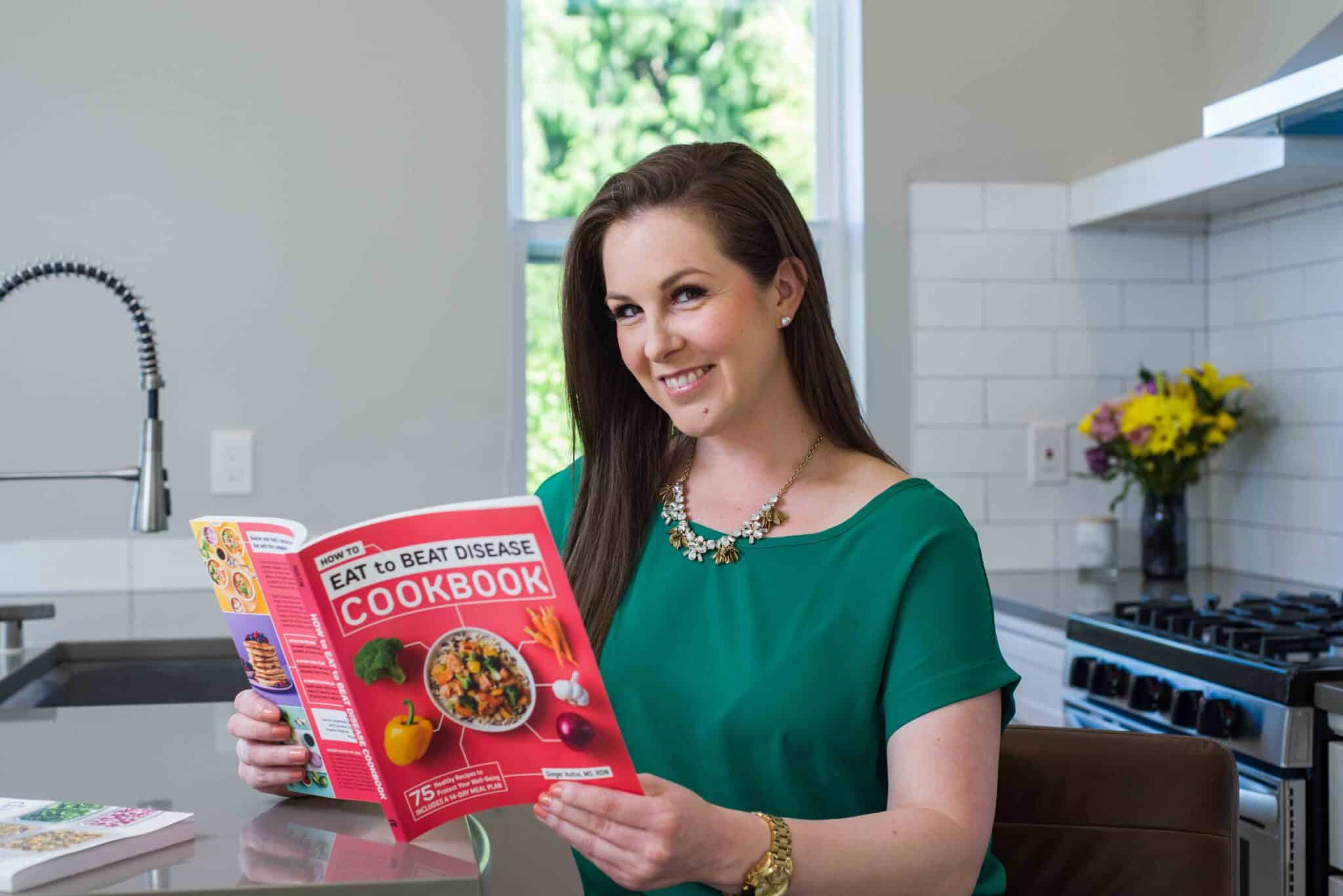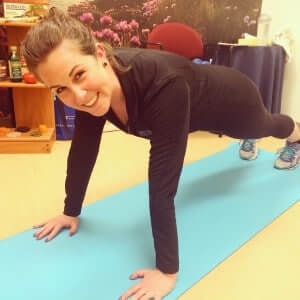The Winter Workout Dilemma
February 15, 2016 by Ginger Hultin MS RDN
It’s the middle of winter, your morning alarm clock goes off, and it’s pitch black outside – sounds like the perfect time to jump out of bed and workout right? LOL not quite! I always think it sounds so much better to stay in bed and get an extra hour of sleep rather than brave the dark and rainy Seattle mornings to get my heart rate up. If you are like me and this in cold areas this time of year, the winter workout dilemma is real!
I could come up with every excuse in the book to skip workouts this time of year, but the truth it is so important to be active year-round. As a dietitian and personal trainer, I talk about the benefits of moving your body a lot…with every single client.
One of the biggest reasons to make time for your workouts this winter is the impact it has on your mental health (not to mention all the other benefits of exercise-heart health, blood sugar control, strong bones, immune system). Less daylight can actually impact how we feel. Have you heard of seasonal affective disorder (also known as SAD)? Basically, the environment and weather can impact how you feel. Symptoms of SAD include fatigue and depression. A lot of people have it here in the Pacific Northwest; it’s actually pretty common. Exercise can support you by boosting feel good endorphins and neurotransmitters.

How to Solve Your Winter Workout Dilemma
I live in the Pacific Northwest and I am surrounded by people who still love getting outdoors to ski, hike, run in the rain, and I even see people out rowing on the lake early in the morning (omg). If that doesn’t quite sound like your ideal winter workout, I recommend getting a routine you can do indoors. The great news is there are so many workout studios now that you can keep up with a variety of different activities like spin, tabata, and other HIIT classes.
On the days where I am simply too busy or yes, even avoiding driving across town to go to an indoor class, I do a workout in my living room. This type of workout is great whether you have 20 minutes or even just 10. Many people think that you need at least an hour to get a good workout, but that’s actually not true. Research shows that even short bouts can give you health benefits like lowering your blood sugar (and balanced blood sugar is important for everyone, even if you don’t have an underlying disease).
If an indoor winter workout sounds right for you, one thing that is so important to me is that you practice with the proper form. One bad squat and you are out for weeks. My main objective is to keep all my clients away from injury. Here’s a quick break down of good form on some common mistakes. Remember, you MUST work out with a certified trainer to get these moves right. These are just some general guidelines for you to keep in mind but before you implement, please work with someone in person:
- Squats and lunges – maintain alignment with your knees and your ankles. If you can’t see your toes, you are probably putting too much pressure on your kneesKeep your knees pressed out instead of moving inwards, this keeps them in a more stable position.
- Hyperextension – always keep a slight bend in your elbows and knees to avoid over-extending to protecting your joints.
- Quality not quantity – think about doing slow, quality movements and practicing good form throughout every, single workout. Never rush. A lot of injuries happen at the end of a rep set when we might be less focused on the movement. That’s when I trip on the box every.single.time. Maintain your focus.
- Stretch – make sure to set up a stretching routine before you get going on any workout. This is so important year round, but even more so in the winter as the cold weather makes you more susceptible to injuring a muscle.
So what types of exercises can you do at home?
Think stationary movements. To get a little cardio in and really get your heart rate pumping try mountain climbers, jumping jacks, box jumps or jumping squats. (Again, you may need medical clearance before starting something like this). Pair this type of exercise with full-body challenges like lunges, push-ups, and ab-work. You actually don’t even need weights.
I’ve created a sample workout below to get you started. It will definitely get you sweaty, energized, and ready to take on the day. Please reach out if you have any questions.
Before you get started on any workout it is important to talk with your healthcare provider, especially if you have any underlying health conditions or are unsure about proper form.
Sample Indoor Winter Workout
Warm-Up: 2x through
- 10 push ups (make sure you have good form here; most people should be on their knees until they truly have the strength to be on their toes!)
- 10 glute raises (heels on the floor)
- 10 walking lunges (on each leg)
Set 1:
- 10 body squats (squeeze glutes at the top each time)
- 20 mountain climbers
- 10 tricep dips (can be done with a chair, bench, etc.) *avoid this if you have any rotator cuff issues. Be sure not to overextend.
Set 2:
- 10 front-lunges (each leg) *caution with knee injuries
- 8 alternating planks (start in a straight arm plank position, then lower to your right elbow, then your left elbow, then with one arm at a time return to plank position)
- 15 v-ups
Set 3:
- 10 back-lunges (each leg) *caution with knee injuries
- 20 calf raises
- 10 burpees
Set 4: Core Strength
- 20 toe touches (feet up)
- 10 single leg raises
- 1 minute plank
Cool-Down
- 5 down-dog into a push-up (done SLOWLY) and return to down dog position
I recommend building on this workout based on your current fitness level. You might start doing these sets one time through and then add a second round the next time. With each workout you will build more strength (and you’re sure to be sore the next day).
It’s important to keep recovery in mind. Take a day off in between strength training days to give your muscles time to recover and rebuild. It’s important to fuel your workouts with the right nutrition (protein, carbs, heart healthy fats, and hydrate!) to support your recovery too. Lastly, think about adding a more cardio-based workout on the alternating days.
Are you ready to beat your winter workout dilemma and get moving? What are your tips for staying active this time of year? I’d love to hear from you.
If you’re looking for more tips to stay healthy this winter checkout what I have to say about what happens to your vitamin D this time of year when you live in certain climates.
1 Comments
Leave a Comment

Ginger Hultin,MS, RD, CSO
Thanks for visiting! If you're struggling with a cancer diagnosis, autoimmune condition, gut health problems, or even a medical mystery, nutrition can make a HUGE difference in your day-to-day life. I run a virtual, concierge private practice where I partner with my clients over time to help them improve their health through nutrition. Be sure to visit the blog for easy, plant-based, anti-inflammatory recipes and our "Resources" page for a variety of self-paced programs, books, e-books, and nutrition podcast episodes.


The content of the blog is great and I really like the way it is explained. The indoor workout is the best way to do stay fit in winters also with some easy steps at home.